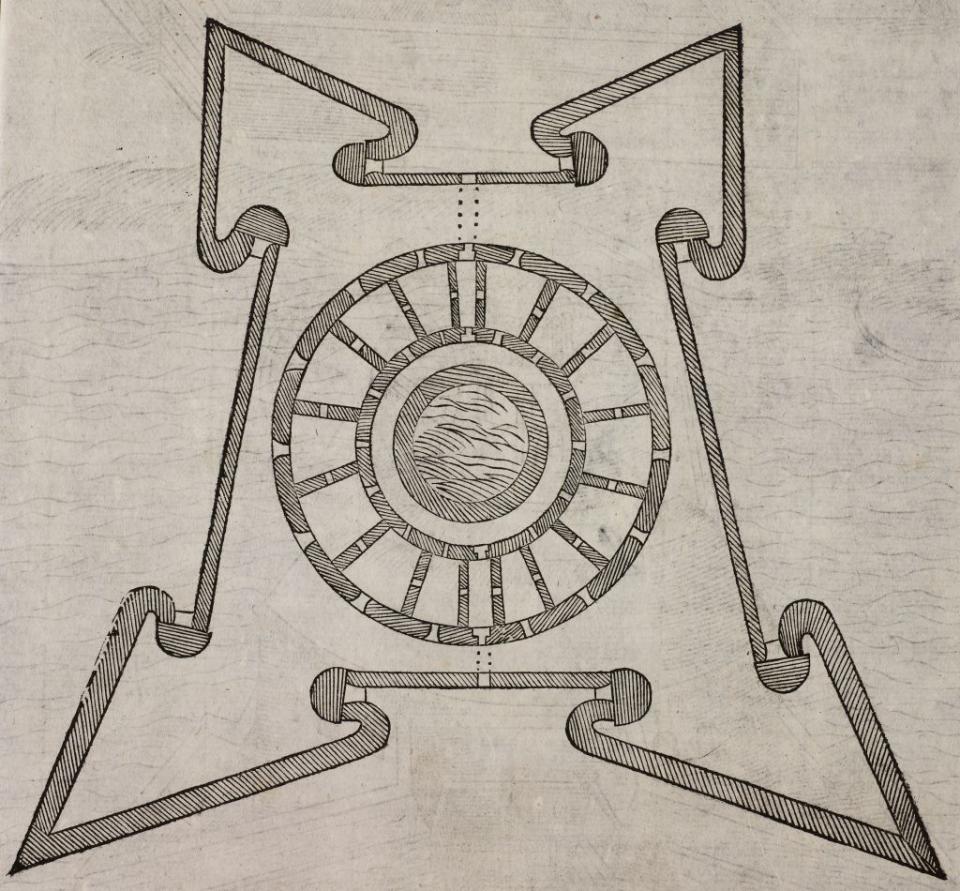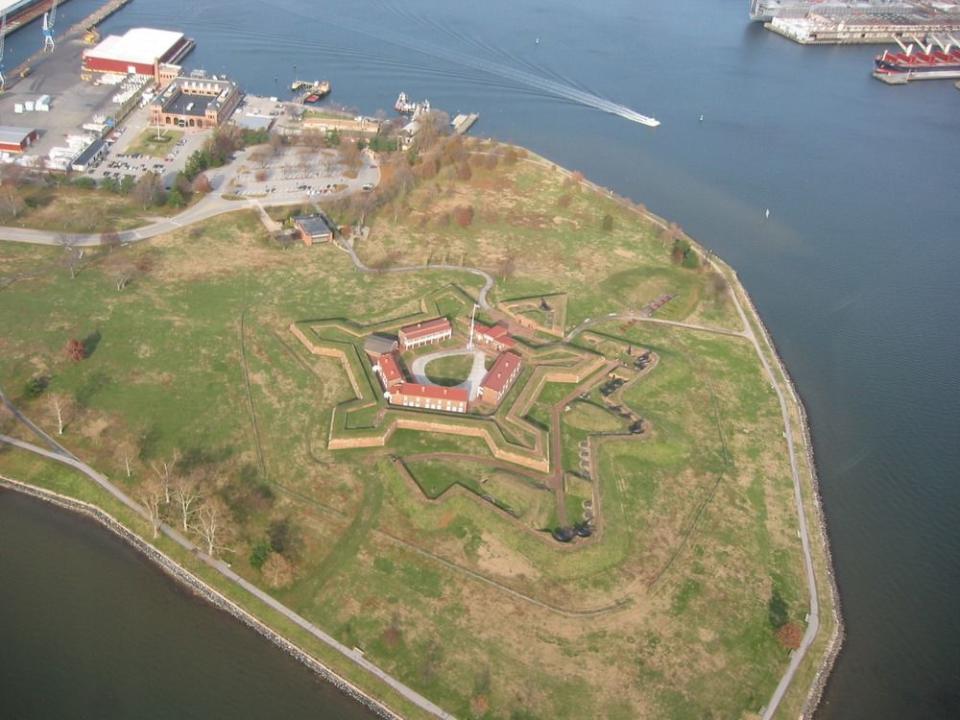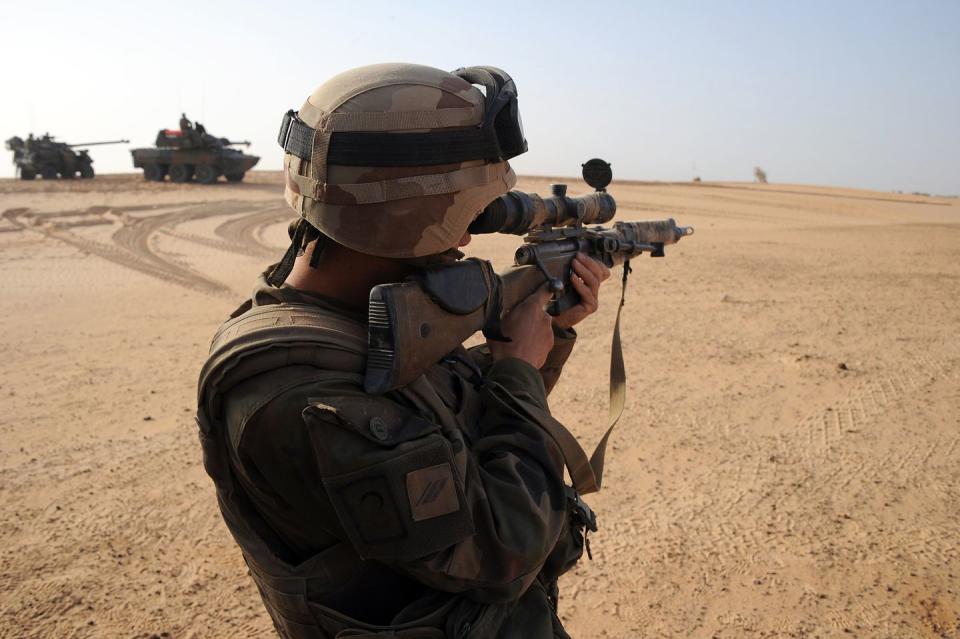Medieval Star Forts Are Surprisingly Alive and Well in North Africa
Photos from Mali show French Army forts that have a distinctly medieval look.
The forts are similar to those invented by 17th century engineer Sébastien Le Prestre de Vauban.
The forts’ signature star shape is designed to make life very rough for anyone attacking them, but it also has a limited use in the 21st century.
The French Army is drawing on a 350-year-old fortification pattern to protect its troops in North Africa.
➡ You love badass military tech. So do we. Let's nerd out over it together.
A French base in Mali is roughly based on the works of Sébastien Le Prestre de Vauban, a military engineer who developed the concept of star-shaped fortresses. The shape of the forts, as well as their outlying moats, are designed to allow defenders to fire on the flanks of attacking ground troops while offering no cover to those trying to breach its defenses.
The photos, which Defensionem recently published, show two French Army forts in Mali, where France, the U.S., and several other European countries are assisting the national government as it battles an Islamist insurgency.
Base opérationnelle avancée temporaire vers Ménéka, style Vauban, réalisée en 2018 par le 17e régiment de Génie parachutiste (qui a signé son ouvrage en haut à droite)
En attendant (peut être un jour) une vue aérienne du camp en étoile de Labbézanga (le long du fleuve Niger)... pic.twitter.com/DDCl06pdiR— FdeStV (@Marsattaqueblog) August 19, 2020
The fortifications, constructed by the 17th Parachute Engineer Regiment, consist of a fort in the shape of a pentagon. At each of the five points of the pentagon is an arrow-shaped fighting position known as a redan.
Vauban, who was born in 1633, designed the fort concept. The engineer’s contribution to military history was to take the trace italienne, a four-pointed fort invented by Italian engineers, and add a fifth or additional point, giving the fort a distinct, star-shaped look.

The Vauban fort was designed to resist the power of artillery. The concept of siege warfare itself was thousands of years old, but a lack of powerful siege weapons meant well-constructed fortresses could often hold out for prolonged periods of time. The advent of gunpowder meant an attacker could now shatter fort walls with cannonballs, reducing stone walls and other defenses and forcing the defenders to surrender.
The Vauban fort is designed to bring as much defensive firepower as possible to bear against defending forces. Fort cannons can be easily moved from one wall to the next, and out on the arrow-shaped redans. From there, up to three such redans can fire upon enemy forces at long ranges, or two redans from shorter ranges. The trace italienne, by contrast, can only fire on an enemy from two redans.
It gets worse. If an army attempts to storm a Vauban fort, the defenders can engage them from multiple directions. Not only must an attacking army face fire from the front, but the pentagon shape also means defenders can take them under fire from their flanks. If an attacker tries to attack a redan head-on, up to three of the redans can take them under fire at once.

Some forts included moats, constructed at a distance, that mirrored the shape of the forts. The moat wasn't meant to be impregnable, but rather to slow down an attacker and give the defender time to prepare. Enemy forces would also bunch up near moat crossings, making excellent targets.
The British in Helmand named their main base Bastion; the French in Mali have gone full Vauban.https://t.co/B4dIdgXZaQ
— Ian Kikuchi (@curatorian) December 28, 2020
Today, more than 400 years later, the Vauban forts are back in style. Malinese insurgents aren't a sophisticated, well-trained enemy, and the most the French might expect is a mass attack by ill-trained guerrilla forces across open ground. Instead of cannons, French forces would use medium machine guns such as the FN MAG (known as the M240 in the U.S. Army) and automatic grenade launchers such as the Heckler and Koch GMG.
The Vauban fort of the 21st century retains all the advantages of forts constructed in the 17th century, and one fort in Mali even has a star-shaped ditch that mimics a moat in purpose.

But fort patterns from the 16th century can only go so far in the modern era. Vauban forts would be disastrous against a modern, mechanized enemy such as the Russian Army.
Forts concentrate defensive firepower in a single position, a feature that wouldn't work against today’s defenders. A modern adversary would pound the fort to pieces with air strikes and artillery, while tanks and other mechanized would simply bypass the fort. Trapped inside, the defenders could only sit and watch the enemy advance while they awaited destruction.
🎥Now Watch This:
You Might Also Like

